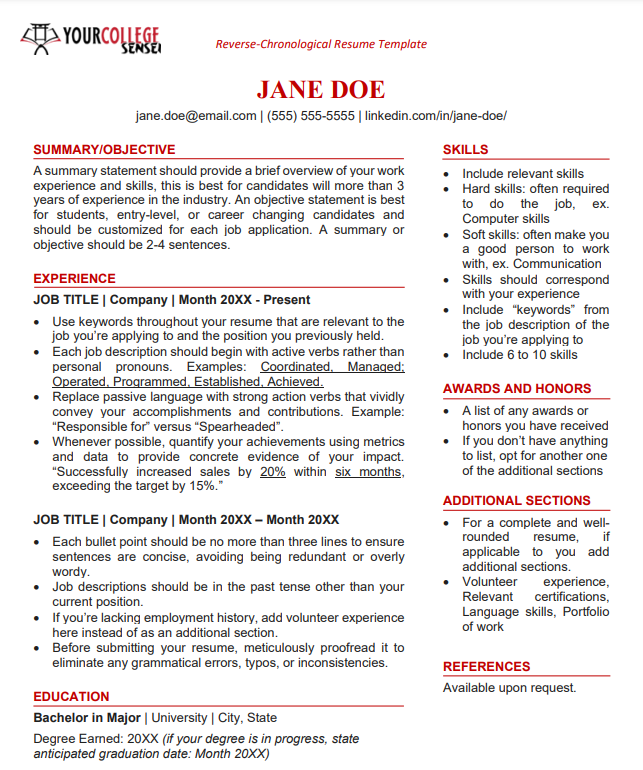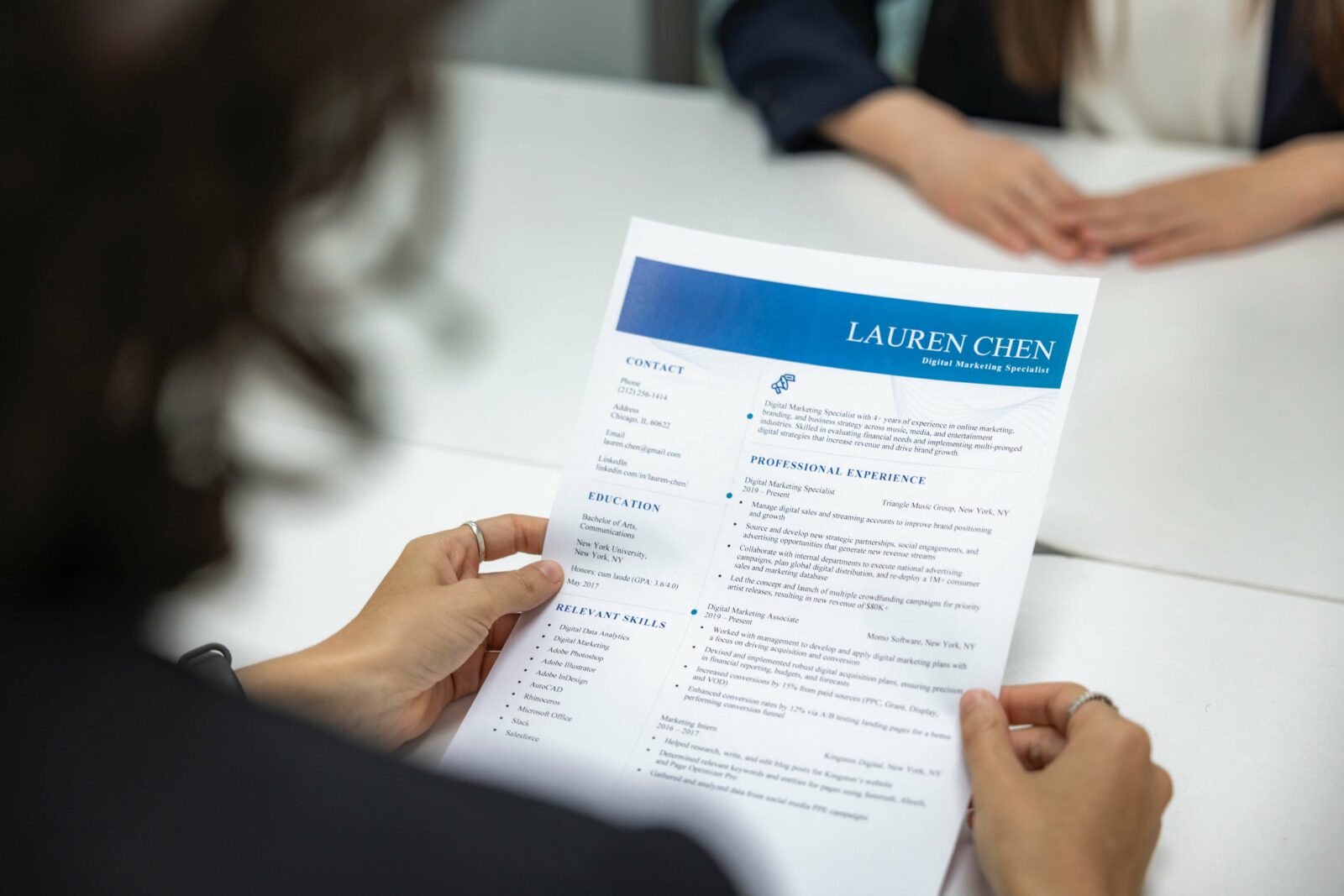Knowing how to write a resume is an essential skill for navigating today’s competitive job market. Your resume is a marketing tool that you use to sell yourself to potential employers. It should be a concise and compelling document that highlights your skills, experience, and accomplishments.
Knowing how to write a good resume can significantly increase your chances of landing a job interview. Your resume is your first impression on potential employers, so it’s important to make a good one. A well-written resume will make you stand out from the competition.
What Is A Resume
A resume is used to apply for jobs. It is a concise, one or two-page document that summarizes your professional qualifications, skills, and educational background. It encompasses your diplomas, degrees, certifications, and relevant training. When you write your resume, try not to go over two pages. A resume should be tailored to the specific job you are applying for, and it should highlight your most relevant skills and experience.
Types Of Resumes
While a variety of resume formats exist, four primary types are widely used. The best resume for you depends on your individual background and the nature of the position you are applying for.
Top 4 types of resumes:
- Reverse-chronological resume: This is the most popular and traditional format. It lists your work history in reverse order, starting with your most recent or current job. It highlights your career progression and achievements.
- Functional resume: This format focuses on your skills and abilities rather than your work history. It is ideal for people who are changing careers, have gaps in employment, or have limited work experience.
- Combination resume: This format combines the best elements of the reverse-chronological and functional resumes. It showcases both your skills and your work history, giving you more flexibility and versatility.
- Targeted resume: This format is customized for a specific job or company. It highlights your relevant skills and achievements that match the job requirements and the employer’s expectations.
Tips For A Strong Resume
To write a strong resume, you should research the job and the company, use keywords and action verbs, quantify your achievements, and proofread your document carefully. This will create a strong resume that will effectively showcase your qualifications and increase your chances of landing the job you are applying for.
1. Conduct In-depth Research
It is wise to tailor your resume to the specific job you are applying for. Therefore, before you start the resume writing process, dedicate time to research the specific job and the company. The goal is to tailor your resume to align with their requirements and expectations. Research the company’s mission, values, and vision statement. These statements often provide an overview of the company’s priorities, beliefs, and aspirations, giving you a glimpse into its “culture”. This will demonstrate your understanding of their organization and its aspirations.
A simple and quick way to get to know a company and its “culture” is to explore its website and social media presence. Read the “About Us” section, it will provide insight into the company’s values, aspirations, and history.
2. Use Keywords Strategically
Use keywords throughout your resume that are relevant to the job. The best way to find keywords is to review the job description and identify keywords that are frequently used to describe the desired skills, qualifications, and experience. Strategically incorporate these keywords throughout your resume, particularly in the summary and experience sections. This will increase the likelihood of your resume passing applicant tracking systems (ATS) and reaching the hiring manager’s desk.
3. Use Action-Oriented Language
Action-oriented language is a style of writing that emphasizes specific actions and accomplishments, rather than simply stating general responsibilities or duties. It is a powerful tool for communicating your skills, experiences, and achievements in a way that is clear, concise, and impactful.
Replace passive language with strong action verbs that vividly convey your accomplishments and contributions. Instead of stating “Responsible for managing social media accounts,” opt for a more impactful phrase like “Spearheaded the development and implementation of social media strategies, resulting in a 20% increase in follower engagement.”
4. Quantify Achievements
Whenever possible, quantify your achievements using metrics and data to provide concrete evidence of your impact. Quantifying achievements in a resume involves using numbers, percentages, or other metrics to demonstrate the impact and results of your work. This helps to make your accomplishments more concrete and measurable, and it can also make your resume more impressive to potential employers.
For instance, instead of simply stating “Increased sales,” quantify your success by saying “Successfully increased sales by 20% within six months, exceeding the target by 15%.”
5. Proofread
Before submitting your resume, meticulously proofread it to eliminate any grammatical errors, typos, or inconsistencies. A polished and error-free resume reflects your professionalism and attention to detail, leaving a positive impression on potential employers.

Essential Elements That Should Be On All Resumes
Despite the varied nature of resumes, there is certain information that must always be included. This fundamental information serves as the foundation for a successful resume.
Here are the essential elements that should be included on your resume:
Contact Information:
- Your full name
- Your email address
- Your phone number
- Your LinkedIn profile URL (I offer a FREE LinkedIn Workshop for Students. Contact me if your group/class is interested)
Summary or Objective:
- A brief overview of your skills and experience
- A statement of your career goals
Education:
- The name of the institution you attended
- The degree you earned
- The date you graduated
- Your GPA (if it is high)
- Any relevant coursework or projects
- Do NOT include a high school diploma if you have any college
Experience:
- Your job title
- The name of the company you worked for
- The dates you worked there
- A brief description of your responsibilities and accomplishments
Skills:
- A list of your relevant skills, including both hard skills (such as computer skills) and soft skills (such as communication skills)
Awards and Honors:
- A list of any awards or honors you have received
Additional Sections:
- Volunteer experience
- Relevant certifications
- Language skills
- Portfolio of work (if applicable)
If you are not sure which type of resume format you should use, I strongly recommend opting for the reverse-chronological style, given its widespread popularity and effectiveness. Its clear and concise structure ensures that potential employers can effortlessly grasp your professional journey.
Now that you know how to write the perfect resume, learn how to nail the perfect interview.
—Sensei










Leave a Reply